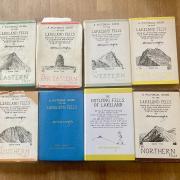Whether you love it or loathe it, shooting has played a major role in shaping some of our most oustanding countryside. Roger Borrell reports
To those who hike across Lancashire’s glorious moorland, it seems like the most natural place in the world. Beautiful, rugged, wild and totally phoney.
Perhaps that’s a slight exaggeration, but since the 1860s these heather moors have been manicured and managed with the sort of passion a superannuated accounts clerk might lavish on his lawn. And without man’s intervention they would be very different places.
The reason for all this fuss is a small, unassuming bird probably best known for its starring role waddling across our screens in a whisky advert. It’s the red grouse.
This bird is only found in these islands, in particular here in Lancashire, and it is much prized by the wealthy end of the shooting fraternity, gourmets and chefs.
53August 12 – or the Glorious Twelfth – is not a date any sensible grouse would put on its calendar beside a big smiley face.
Rich people from across the world spend an eye-watering amount of money to shoot them as they skitter ten feet off the ground at speeds of up to 80mph.
Lancashire Life joined an unarmed expedition from north Preston Rotary Club to tour the Duke of Westminster’s estate and ask the question: What have grouse moors ever done for us?
There is no question that game shooting provokes a range of emotions, from revulsion to intense pleasure. So, do the benefits brought about by managing moorlands outweigh the concerns of those opposed to blood sports?
Heather moorland is said to be rarer than rainforest and 75 per cent of what is left on the planet is here in Britain. The reason it survives here, says the Moorland Association, is because it is managed specifically for the red grouse.
The Duke’s estate covers in excess of 23,000 acres in the Forest of Bowland with the pretty River Wyre dividing it and the old stone village of Abbeystead at its heart. It’s an area of outstanding natural beauty, a site of special scientific interest and a firm favourite among middle-aged bikers eager to burn up the country lanes.
But up on the moorland tracks – all open access land – outside of the shooting season, these plump birds are left in peace. Here, amid breathtaking views they use the heather to nest in, feed on and shelter from the predators who far outnumber the people with shotguns.
Neil Kilgour, who manages the estate for the Duke, says that while the growing number of raptors is something they have to live with, they can protect the grouse from other hungry mouths – the likes of rats, weasels, crows, stoats and foxes.
The knock-on effect of this creates a safe haven for other bird. Waders, for instance, are among Britain’s most defenceless birds, migrating to these uplands to breed. They are particularly vulnerable because they nest on open ground. Research has shown that some rare upland wading birds can be five times more abundant on moorland managed for grouse than on other terrain.
Neil says the art of running a game estate is maintaining a balance. ‘We are creating a habitat that is specialised for grouse and that means it’s also specialised for creatures that eat grouse.’
When predator control is abandoned in places like Dartmoor, the result is the loss of birdlife. ‘The growth cycle of predators tends to build up more quickly than the creatures they feed on. The end result is that they eat everything and move on.’ Much time and research is also done to defeat the ghastly ticks, that little bloodsucker that spreads a variety of diseases, some fatal to men and beasts.
Where moors are managed by gamekeepers using legal traps, ground nesting birds such as curlew and lapwing are 3.5 times more likely to raise a chick to fledging, according to the Moorland Association. These areas also support a rich variety of flora, such as bilberries, and carefully controlled fires encourage heathers to regenerate and flourish.
The landscape here has been managed for more than 150 years but elsewhere in the UK the past century has seen 250,00 acres of English moorland disappear under get-rich-quick forestry and bracken and through overgrazing and peat extraction. In the last 25 years, the Moorland Association has been instrumental in restoring much of that land.
Others benefits include the vast quantities of fresh water collected as it runs off the moors and the management system helps to protect large areas of peat which trap and prevent carbon emissions.
While, the moorland is a spectacular place to visit, this is a working estate with more than 30 tenanted farms. The people running it show little interest in tourism but that doesn’t stop them provide a good number of jobs, permanent and casual.
That’s demonstrated by the fact the village school used to have less than half a dozen pupils. It know was approaching 40 children. A testimony to the success of the estate and, perhaps, Bowland’s long, cold winter evenings.


























